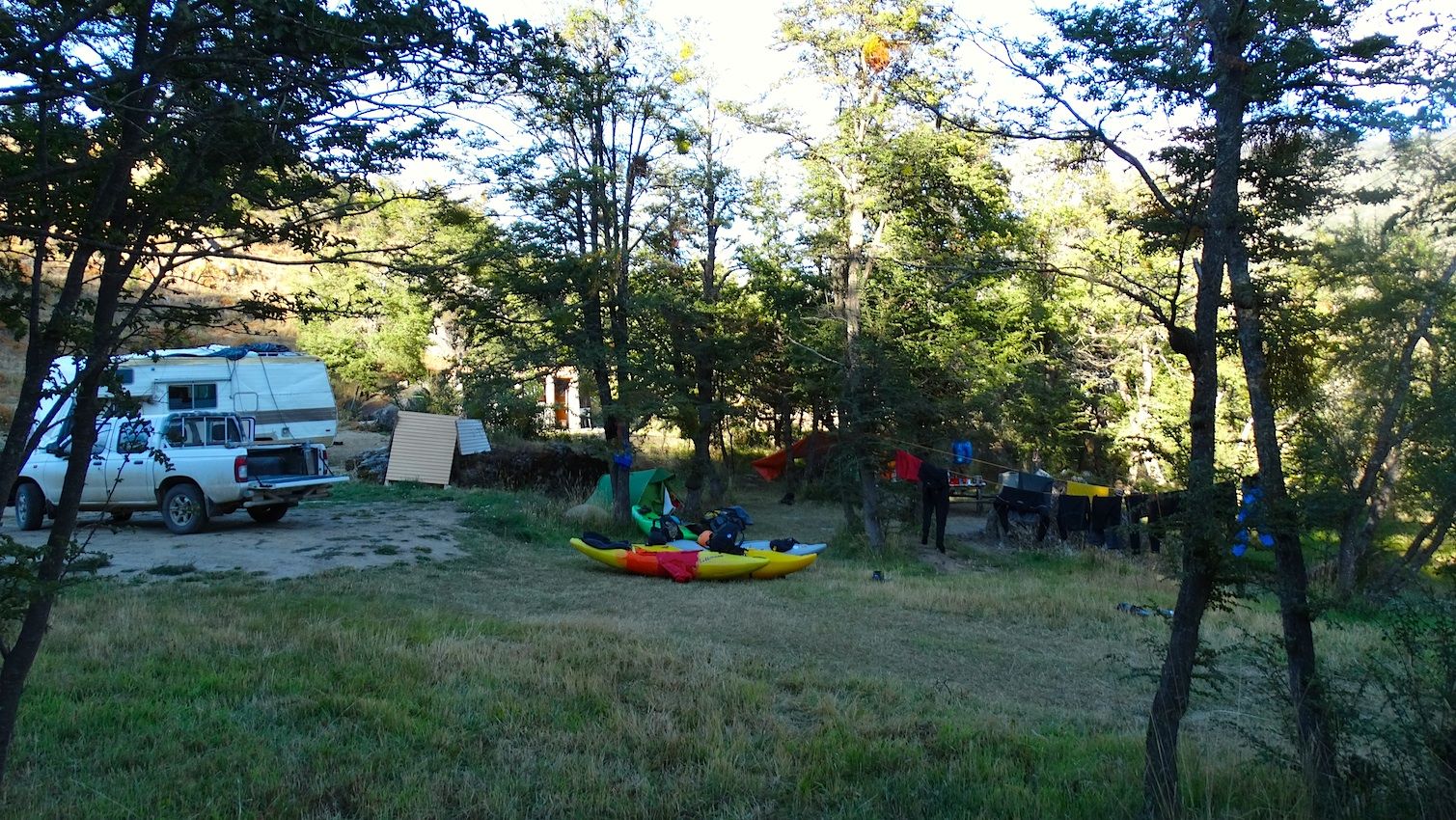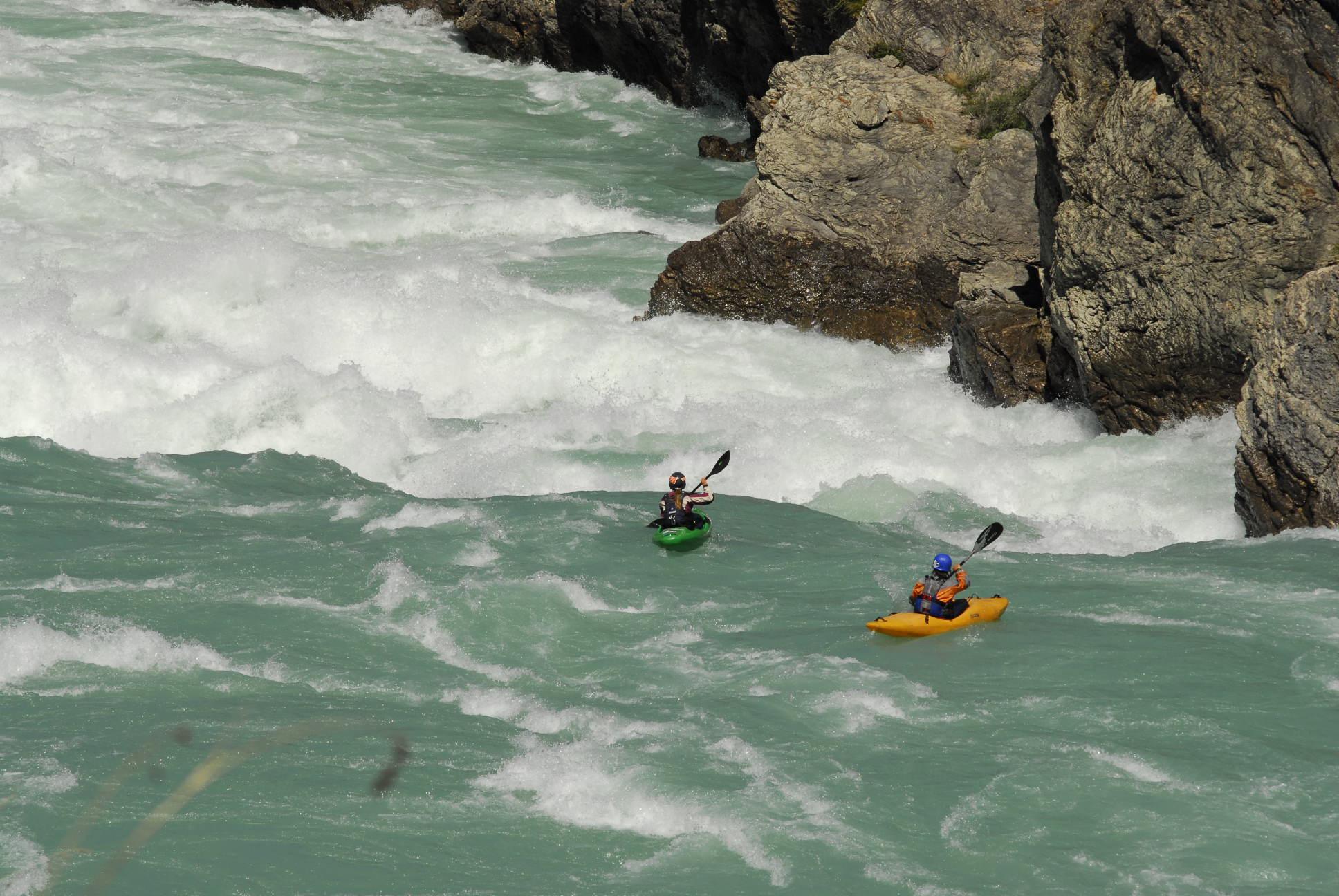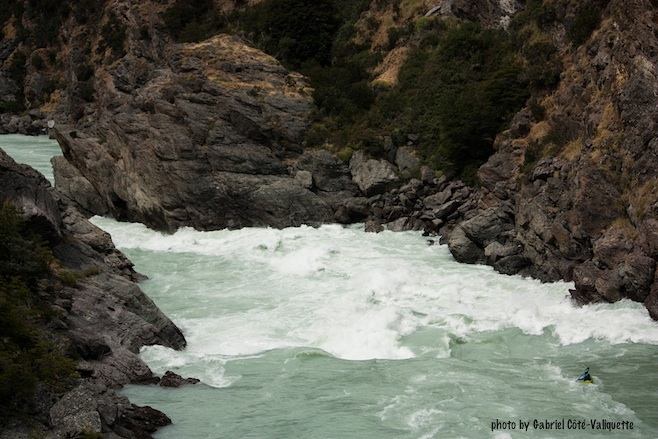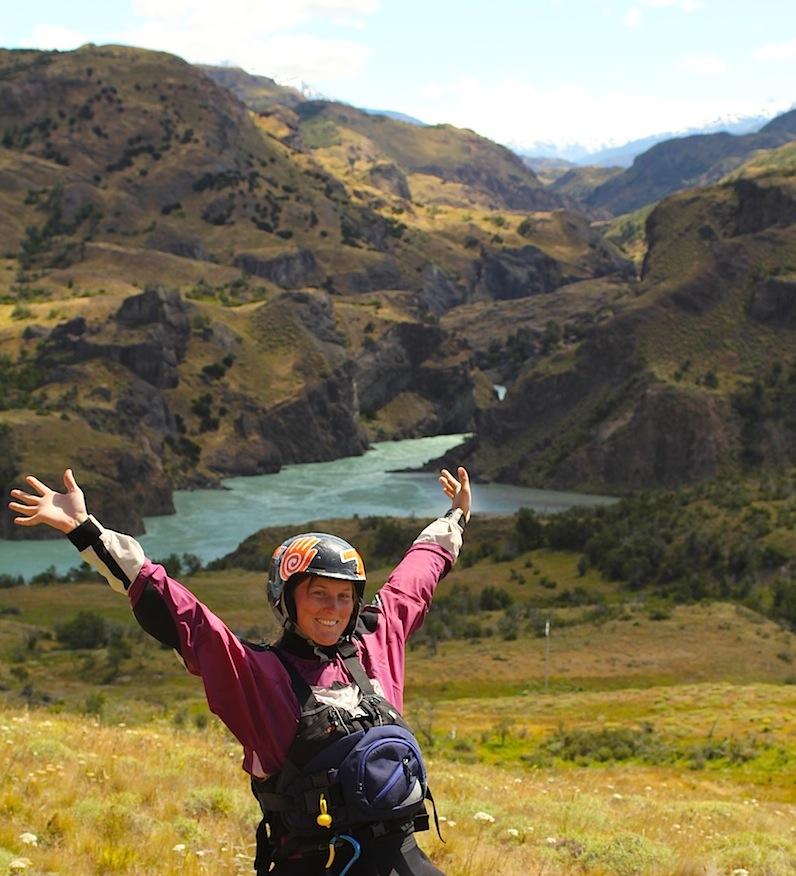Every year paddlers make their way from all over the world to Chile for whitewater adventures. While the rivers in the area between Santiago de Chile and the river Futaleufu are often paddled, the rivers in the far southern part of Chile see way fewer paddlers. This is unfortunate because the south holds Chile’s most beautiful landscape and some outstanding whitewater. Probably the most famous river in this area is the Rio Baker. As few paddlers go down that far, a lot of stories and myths keep others from doing so.

Here are my ten tips for an amazing big-water experience in the heart of Patagonia, on the Rio Baker.
1/ Warm up on the Futa
Coming from the northern part of Chile you will pass the valley of the Futaleufu on your way south. It is a good idea to warm up on this river before hitting the whitewater of the Rio Baker. Not only that you will paddle one of the best rivers in the world, flowing through an incredibly beautiful landscape. Also you will develop a feeling for big volume rivers. If you still feel way out of your comfort zone when running the Futa after a couple of laps you might decide to stay at the Futa and leave the Baker for the next season.

2/ Way down south
The drive from Futaleufu to Rio Baker takes in total about twelve hours. They are doing a lot of pavement work so that this time will decrease a lot in the near future. Anyway it is a good idea travel during daylight, otherwise you will miss a lot of the great scenery and epic landscape (numerous glaciers, the Cerro Castillo and Lago General Carerra) which you pass by on your way. As this part of the country is sparsely inhabited gas stations are pretty rare. Copec gas stations offer maps that also list at least all of their gas stations along the way. If you fancy visiting cities: Coyhaique has shops, cafes, restaurants, supermarkets, bars, nightlife …

3/ Rivers on the way
There are a number of rivers you might want to check out on your way, for example the Rio Ventisquero, Rio Cisnes, Rio Cochrane. Check your guidebook and www.riversofchile.com for the description of these rivers as well as the Rio Baker.
4/ Camping
A good camp spot is the Camping ‘El Parque’ which is located about 2 km above ‘Salto Neff’. This camping is also a good put in if you travel with only one car and without a shuttle bunny. In this case the best way to go is that one person drives the car down to the take out and hitchhikes back while the others prepare breakfast at the campsite. Also Hector, the very kind owner of the campsite, might help you out with driving the shuttle if he isn’t to busy. Hot tips: prepare to talk in Spanish with him – he will love it! And the Campsite offers ‘la mejor ducha de patagonia’ which on its own is a good reason to stay there.

5/ Scout the first canyon beforehand
The first canyon, which is also the most challenging part of the river consists of four rapids. At least number 1-3 are best scouted before actually paddling the river from the road which follows the river. It is necessary to hike down to get a good view on every single rapid and an idea of the actual size of all those waves and holes. Make sure that you know the lines before dropping into this canyon for the first time!

Here is my quick advice for those rapids: number 1: Start right of center, aming a bit to the right. You’ll end center as the second wave will push you there. Do not celebrate too long as the second rapid is just ahead of you.

Number 2: the S-bend rapid. Start left of the curler wave and aim a bit to the right. Don´t paddle to hard to the right – otherwise it will be hard to stay center for the second half of the rapid around the corner. Below that rapid there are eddies left and right to stop and share the stoke with your buddies.

Number 3: after passing an island the lead in of rapid number 3 is just ahead of you. Once you´ll make it to the rapid you want to start right of center and aim left.

Number 4: there are a couple lines through this rapid. Scout from the road or from river right (there is a huge eddy before the rapid).

6/ Second and third canyons
All rapids can be scouted when eddying out before the actual rapids. The second canyon, also known as the Whirlpool-Canyon contains a lot of boils but no harder rapids. Once you pass underneath a bridge the second canyon is over and the Baker Play Wave is just ahead of you in the middle of the river.

After that you´ll pass some flat water, make sure to turn around and enjoy the beautiful views all around you.

The first rapids in the third canyon are not too hard. I like to call the second more remarkable one ‘channel rapid’. Right after it you’ll pass some islands before you see the canyon walls close in.

7/ Portage
In the third canyon there is one rapid which is usually portaged. Catching the eddy on the river left side right above this rapid can be quite a hard move especially a higher flows. In any case it is a good idea to take out on the left side after you pass those islands mentioned before and before the canyon walls close in. From there you can walk and scout the eddy above the portage or decide to take the longer but safer option and walk around the whole section.

Hot tip: before putting back in after the portage leave your boats there and hike up on the next hill to have a look at the next rapid with the name ‘V-rapid’.

After the V-rapid you’ll have one bigger rapid ahead of you which is scouted from river right. Hot tip: don’t try to head left too early as this might push you into the uncomfortable eddy below on river right. If you get pushed in there: stay calm and paddle out!

8/ Gear
Be sure to wear a bomb proof spray skirt! Big breaking waves, whirlpools and eddy-lines which might lead to some unwanted downtime will create forces that you usually only experience when running big waterfalls. For the same reason earplugs (wearing them is always a good idea) become pretty handy.
9/ Take out
There are guidebooks which describe the take out right at the confluence with the Rio Chacabuco. Taking out here means a fairly good hike up to the road (I did it once and will never do it again).

The better option is to float down for another 10 km and celebrate your successful descend and take out at the ‘Ferry Balsa Baker’. Floating down without paddling will take about one hour. Hot tip: take some refreshing drinks and enjoy them on the way down. Watch out to see some Guanakos along the river.

10/ Shopping & gas
From the take out at Balsa Baker it is another 9 km to the town of Cochrane. This town has numerous shops and two gas stations.
